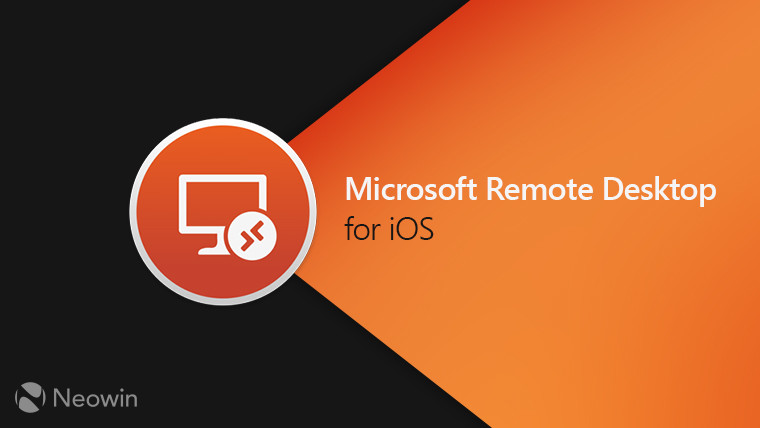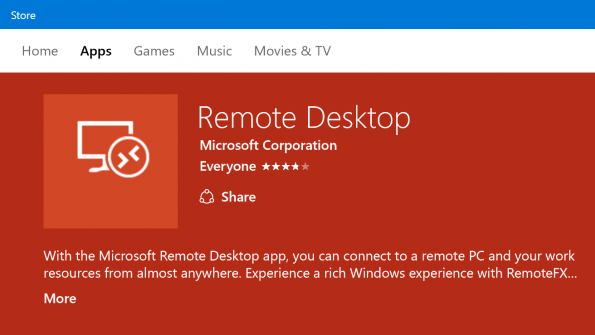May 06, 2018 From your Windows PC, access the Microsoft Remote Desktop assistant to configure it for remote access from another device using the Remote Desktop apps for Windows, macOS, iOS or Android. Email myself a link to the Microsoft Remote Desktop Assistant. You can use the Remote Desktop client for Windows Desktop to access Windows apps and desktops remotely from a different Windows device. Note This documentation is not for the Remote Desktop Connection (MSTSC) client that ships with Windows.
 -->
-->We're often asked how the different Remote Desktop clients compare to each other. The following table lists the features currently available in each of our clients.
Use Microsoft Remote Desktop for Mac to connect to a remote PC or virtual apps and desktops made available by your admin. With Microsoft Remote Desktop, you can be productive no matter where you are. GET STARTED Configure your PC for remote access using the information at https://aka.ms/rdsetup. NAU's Windows Virtual Desktop. Select a the link below to accessing remote applications: NOTICE: Microsoft Remote Apps. As of 1/04/2021 the Microsoft Remote Apps has been migrated to Microsoft Windows Virtual Desktop. If you need assistance connecting to these resources please follow the instructions found HERE or call 928-523-3335. In Remote Desktop Connection, type the name of the PC you want to connect to (from Step 1), and then select Connect. On your Windows, Android, or iOS device: Open the Remote Desktop app (available for free from Microsoft Store, Google Play, and the Mac App Store), and add the name of the PC that you want to connect to (from Step 1).
Client features
The following table compares the features of each client.
| Feature | Windows Inbox | Windows Desktop | Microsoft Store | Android | iOS | macOS | Web | Description |
|---|---|---|---|---|---|---|---|---|
| Remote Desktop sessions | X | X | X | X | X | X | X | Desktop of a remote computer presented in a full screen or windowed mode. |
| Integrated RemoteApp sessions | X | X | X | Individual remote apps integrated into the local desktop as if they are running locally. | ||||
| Immersive RemoteApp sessions | X | X | X | X | Individual remote apps presented in a window or maximized to a full screen. | |||
| Multiple monitors | 16 monitor limit | 16 monitor limit | 2 monitor limit | Lets the user run Remote Desktop or remote apps on all local monitors. | ||||
| Dynamic resolution | X | X | X | X | X | Resolution and orientation of local monitors is dynamically reflected in the remote session. If the client is running in windowed mode, the remote desktop is resized dynamically to the size of the client window. | ||
| Smart sizing | X | X | X | X | Remote Desktop in Windowed mode is dynamically scaled to the window's size. | |||
| Localization | X | X | X | English only | X | X | X | Client user interface is available in multiple languages. |
| Multi-factor authentication | X | X | X | X | X | X | Supports multi-factor authentication for remote connections. | |
| Teams optimization for Windows Virtual Desktop | X | Media optimizations for Microsoft Teams to provide high quality calls and screen sharing experiences. Learn more at Use Microsoft Teams on Windows Virtual Desktop. |
Other resources
If you're looking for information about device redirections, check out Compare the clients: redirections.
-->Requirements
- Windows 10
- Cloud only, Hybrid, and On-premises only Windows Hello for Business deployments
- Azure AD joined, Hybrid Azure AD joined, and Enterprise joined devices

Windows Hello for Business supports using a certificate deployed to a Windows Hello for Business container as a supplied credential to establish a remote desktop connection to a server or another device. This functionality is not supported for key trust deployments. This feature takes advantage of the redirected smart card capabilities of the remote desktop protocol. Windows Hello for Business key trust can be used with Windows Defender Remote Credential Guard.
Microsoft continues to investigate supporting using keys trust for supplied credentials in a future release.
Remote Desktop with Biometrics
Download Microsoft Remote Desktop Application
Requirements
- Cloud only, Hybrid, and On-premises only Windows Hello for Business deployments
- Azure AD joined, Hybrid Azure AD joined, and Enterprise joined devices
- Biometric enrollments
- Windows 10, version 1809

Users using earlier versions of Windows 10 could remote desktop to using Windows Hello for Business but were limited to the using their PIN as their authentication gesture. Windows 10, version 1809 introduces the ability for users to authenticate to a remote desktop session using their Windows Hello for Business biometric gesture. The feature is on by default, so your users can take advantage of it as soon as they upgrade to Windows 10, version 1809.
How does it work
Windows generates and stores cryptographic keys using a software component called a key storage provider (KSP). Software-based keys are created and stored using the Microsoft Software Key Storage Provider. Smart card keys are created and stored using the Microsoft Smart Card Key Storage Provider. Keys created and protected by Windows Hello for Business are created and stored using the Microsoft Passport Key Storage Provider.
A certificate on a smart card starts with creating an asymmetric key pair using the Microsoft Smart Card KSP. Windows requests a certificate based on the key pair from your enterprises issuing certificate authority, which returns a certificate that is stored in the user's Personal certificate store. The private key remains on the smart card and the public key is stored with the certificate. Metadata on the certificate (and the key) store the key storage provider used to create the key (remember the certificate contains the public key).
This same concept applies to Windows Hello for Business. Except, the keys are created using the Microsoft Passport KSP and the user's private key remains protected by the device's security module (TPM) and the user's gesture (PIN/biometric). The certificate APIs hide this complexity. When an application uses a certificate, the certificate APIs locate the keys using the saved key storage provider. The key storage providers directs the certificate APIs on which provider they use to find the private key associated with the certificate. This is how Windows knows you have a smart card certificate without the smart card inserted (and prompts you to insert the smart card).
Windows Hello for Business emulates a smart card for application compatibility. Versions of Windows 10 prior to version 1809, would redirect private key access for Windows Hello for Business certificate to use its emulated smart card using the Microsoft Smart Card KSP, which would enable the user to provide their PIN. Windows 10, version 1809 no longer redirects private key access for Windows Hello for Business certificates to the Microsoft Smart Card KSP-- it continues using the Microsoft Passport KSP. The Microsoft Passport KSP enabled Windows 10 to prompt the user for their biometric gesture or PIN.
Compatibility
Users appreciate convenience of biometrics and administrators value the security however, you may experience compatibility issues with your applications and Windows Hello for Business certificates. You can relax knowing a Group Policy setting and a MDM URI exist to help you revert to the previous behavior for those users who need it.
Important
Remote Desktop Manager By Microsoft
The remote desktop with biometric feature does not work with Dual Enrollment feature or scenarios where the user provides alternative credentials. Microsoft continues to investigate supporting the feature.
Related topics
